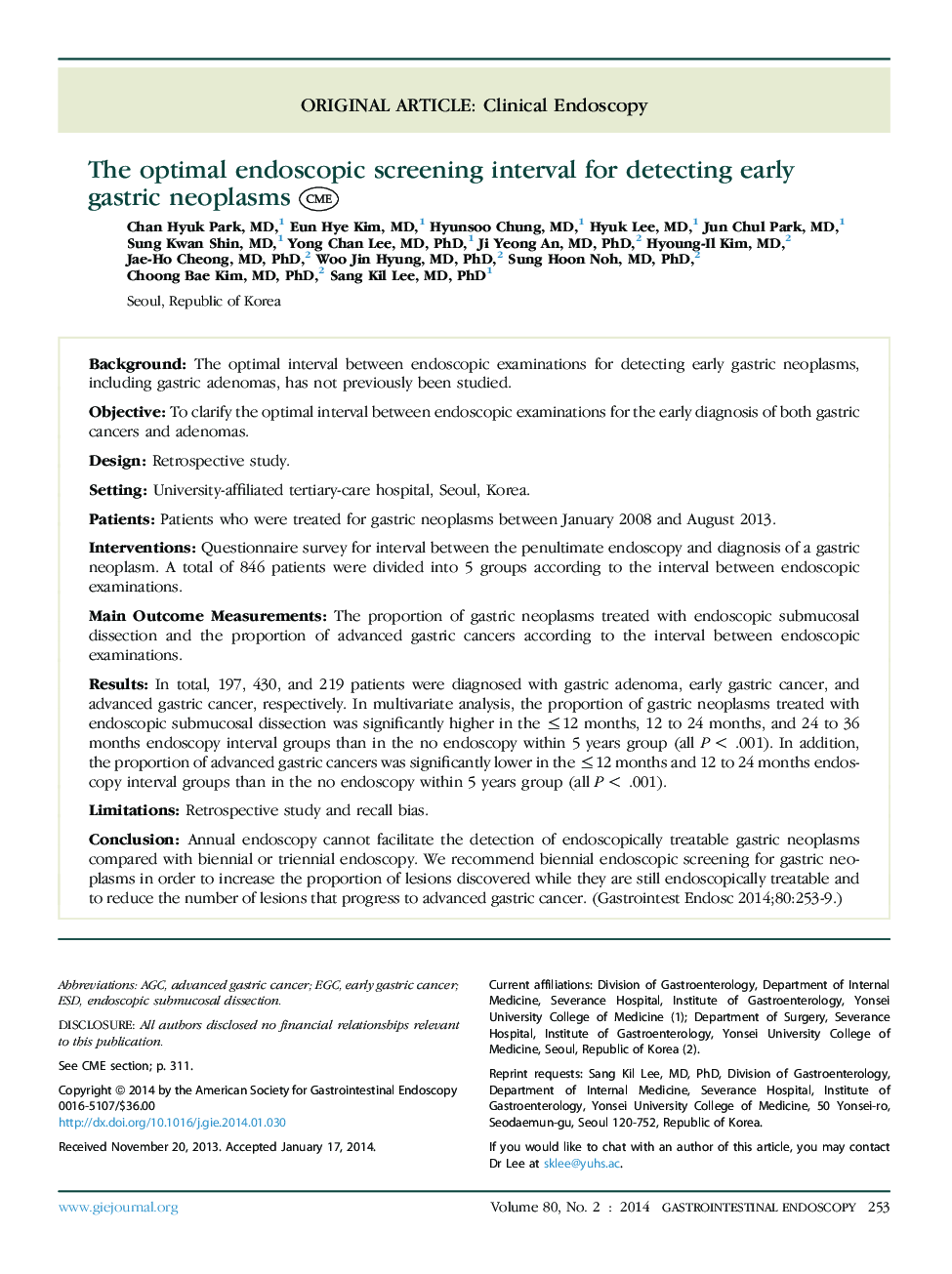| Article ID | Journal | Published Year | Pages | File Type |
|---|---|---|---|---|
| 3302965 | Gastrointestinal Endoscopy | 2014 | 7 Pages |
BackgroundThe optimal interval between endoscopic examinations for detecting early gastric neoplasms, including gastric adenomas, has not previously been studied.ObjectiveTo clarify the optimal interval between endoscopic examinations for the early diagnosis of both gastric cancers and adenomas.DesignRetrospective study.SettingUniversity-affiliated tertiary-care hospital, Seoul, Korea.PatientsPatients who were treated for gastric neoplasms between January 2008 and August 2013.InterventionsQuestionnaire survey for interval between the penultimate endoscopy and diagnosis of a gastric neoplasm. A total of 846 patients were divided into 5 groups according to the interval between endoscopic examinations.Main Outcome MeasurementsThe proportion of gastric neoplasms treated with endoscopic submucosal dissection and the proportion of advanced gastric cancers according to the interval between endoscopic examinations.ResultsIn total, 197, 430, and 219 patients were diagnosed with gastric adenoma, early gastric cancer, and advanced gastric cancer, respectively. In multivariate analysis, the proportion of gastric neoplasms treated with endoscopic submucosal dissection was significantly higher in the ≤12 months, 12 to 24 months, and 24 to 36 months endoscopy interval groups than in the no endoscopy within 5 years group (all P < .001). In addition, the proportion of advanced gastric cancers was significantly lower in the ≤12 months and 12 to 24 months endoscopy interval groups than in the no endoscopy within 5 years group (all P < .001).LimitationsRetrospective study and recall bias.ConclusionAnnual endoscopy cannot facilitate the detection of endoscopically treatable gastric neoplasms compared with biennial or triennial endoscopy. We recommend biennial endoscopic screening for gastric neoplasms in order to increase the proportion of lesions discovered while they are still endoscopically treatable and to reduce the number of lesions that progress to advanced gastric cancer.
